Memes
Did Einstein really say that?
A bit of “wisdom” is juxtaposed with a dead genius. A troubled Keanu Reeves sits on a bench with Forrest Gump. Outrage and irreverence repurpose a famous political poster. We’ve all seen graphic posts like these in our social media feeds and email. They’re called Internet memes.
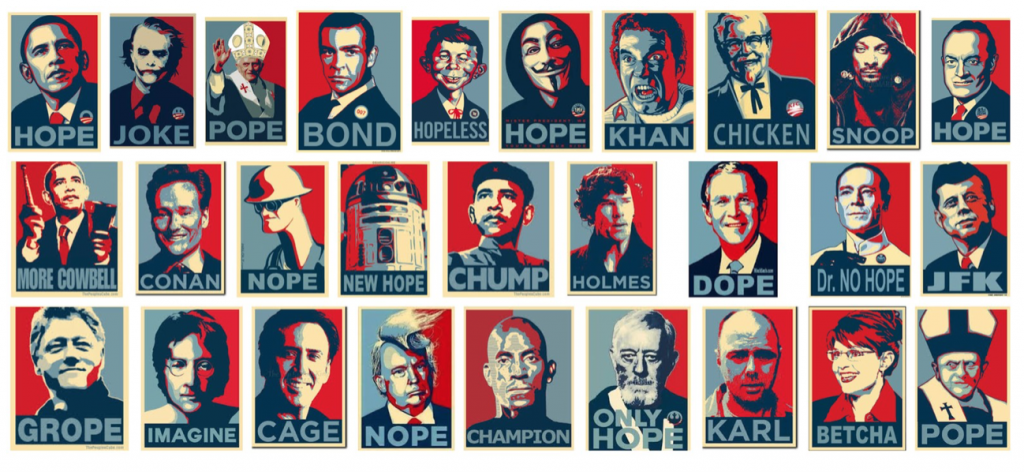
Shepard Fairey’s iconic Hope poster to a “media virus”
replicating across the Internet.
Cultural Transmission
The word “meme” was coined by evolutionist Richard Dawkins in 1976. He combined the greek word mimeme (meaning to imitate/imitated thing) with the word gene as a means to extend Darwinian concepts to ideology and cultural evolution.
Dawkins’ theory was a bit of an overreach. He and other memetic scholars failed to convincingly link cultural artifacts to changes in culture in the same way scientists can link a specific gene with a physical trait. Culture is just too complex. Upon deeper inspection, it proved impossible to determine “who is the boss?” in regards to the potency of a meme versus human agency (Shifman p. 12). As a result, a memetic approach to cultural studies withered on the vine.
Yet, the idea of a meme being a discrete packet of cultural information that is transmitted visually is useful. We can see this work itself out over thousands of years of world culture in areas like religion, architecture and (more recently) mass media.
Memes everywhere you look
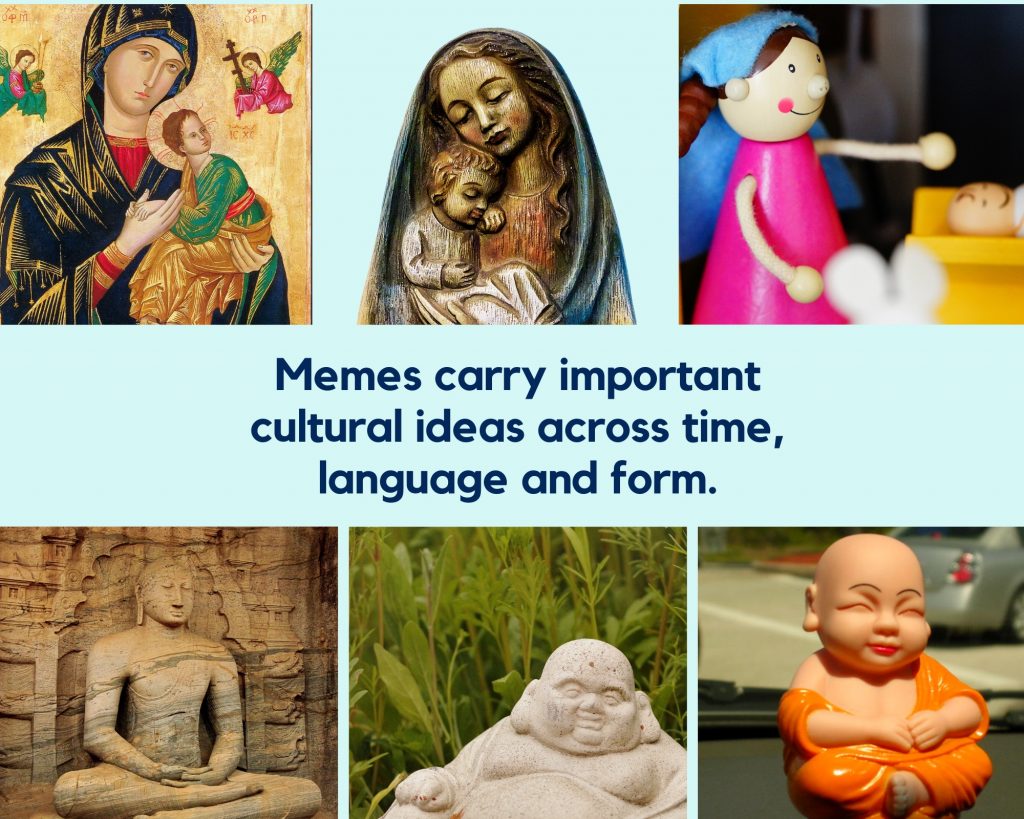
religious art, crafts and even tchotchkes.
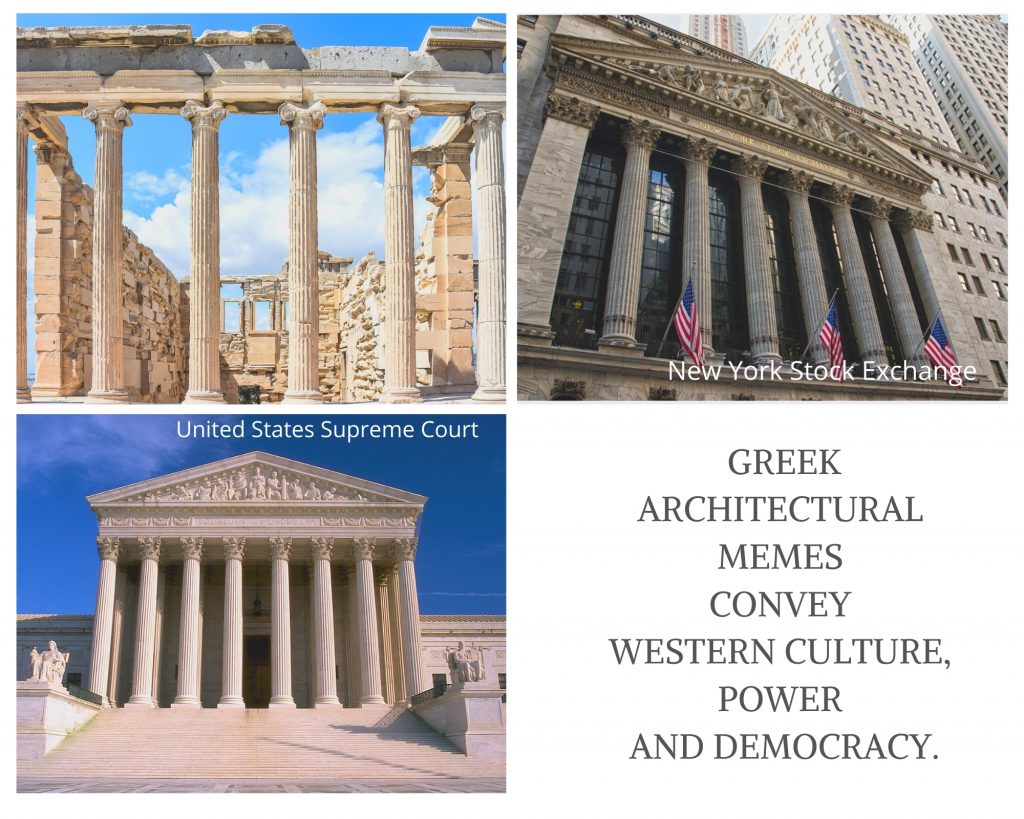
the memes of Western institutional architecture.
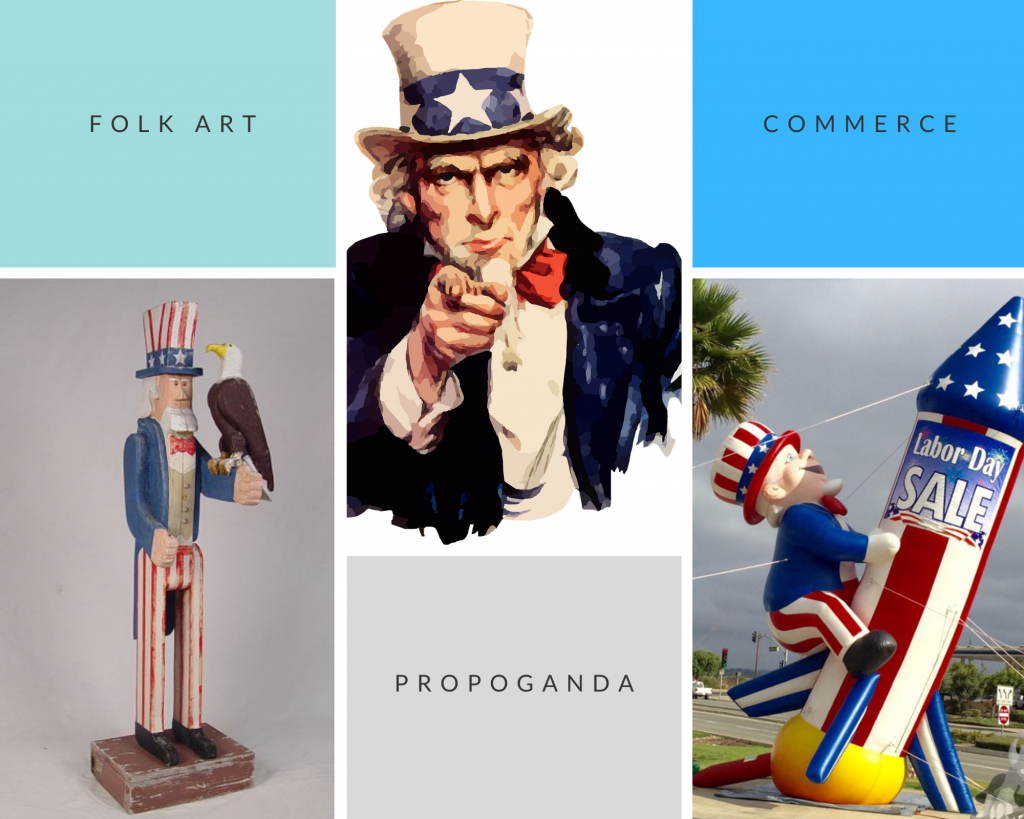
is a recurring meme
in mass-media propaganda and
our greater national identity.
Devolution
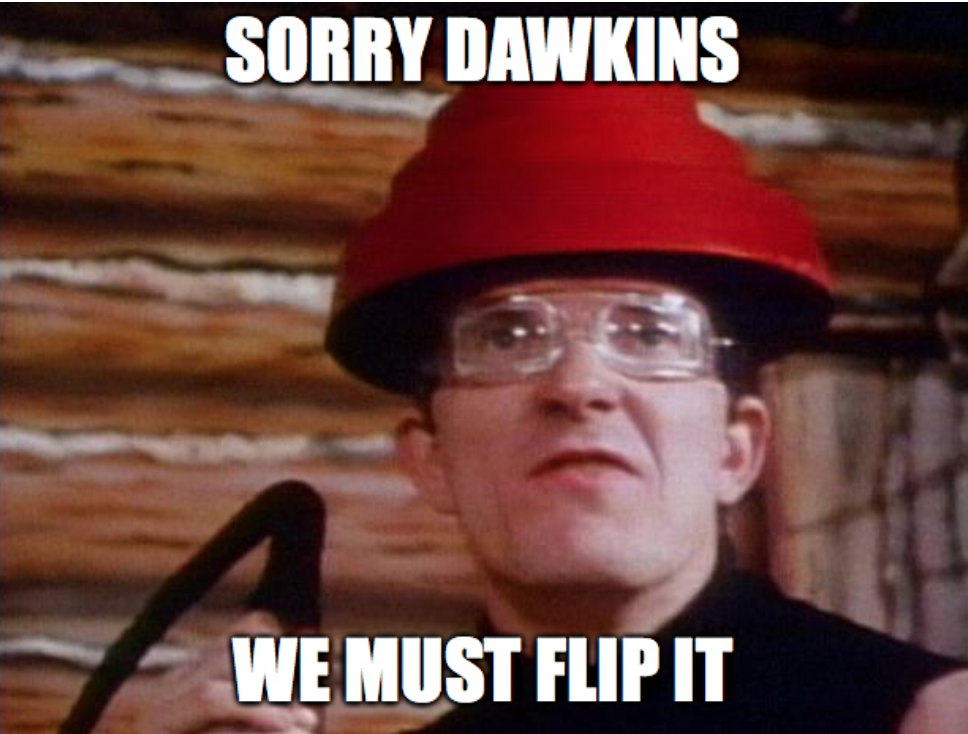
If Dawkins’ memes tried to trace cultural evolution, Internet memes represent cultural devolution. Forget high-browed, survival-of-the-fittest theories of cultural competition. Today’s memes are more likely to be nonsensical, disposable and misleading. They’re emblematic of our open-source, user-generated, socially-constructed digital environments.
Bottom up
One of the key challenges for memetic thinkers was linking original artifacts to historical developments. They just didn’t have a good “fossil record” of original memes. Kilroy was the exception.
The “Kilroy was here” graffiti left behind by U.S. soldiers was a traceable example of a viral meme from its emergence.
Though Kilroy’s run as a cultural phenomena seems to be over, the meme is still an excellent example of bottom-up dissemination. It was the soldiers (not the leaders) who loved and spread Kilroy organically.
“Kilroy Was Here [is] an example of a pre-internet meme with the kind of cultural replication that happens on the internet.”
Because Internet (240)
If the Internet, especially social media, seems chaotic and ridiculous it’s because it is. There is no controlling authority. No gatekeepers. No grammar books. The connections, ideas and content populating social media feeds (including memes) are products of the great connected masses doing whatever strikes our fancy. It’s a beautiful thing to behold.
Understanding Internet Memes
Today’s memes often defy explanation, but that doesn’t stop us from trying.
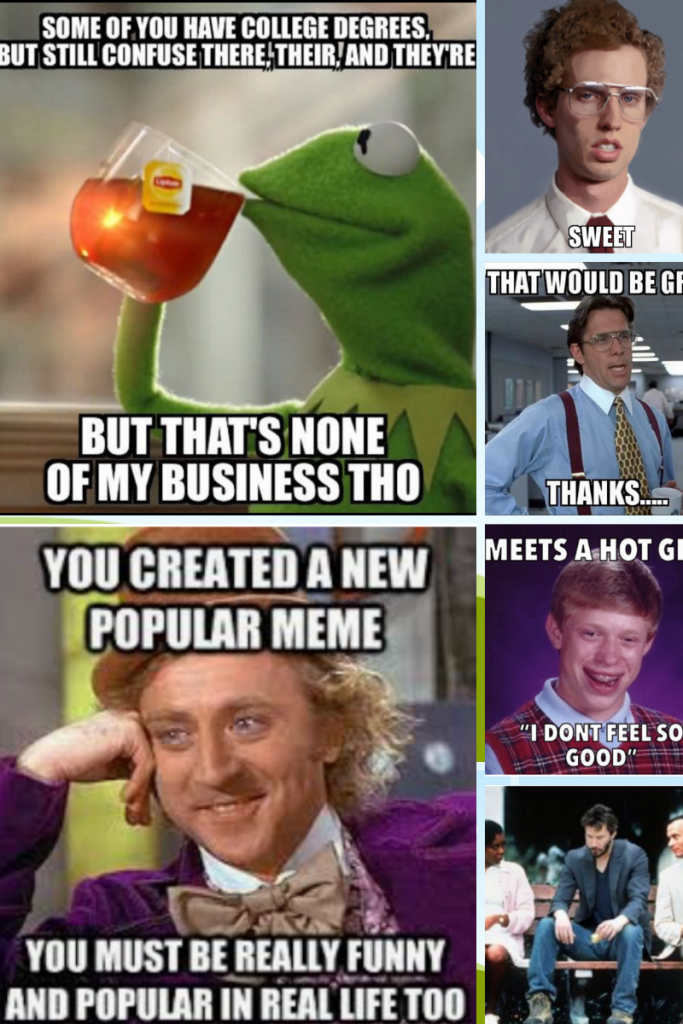
Focusing on what we do rather than searching for intent, Lemor Shifman looks at how memes are produced and identifies “Two main repackaging mechanism of memes on the web: mimicry and remix” (Memes in Digital Culture, p. 30). Google any famous meme and you’ll see this process at work — the same photos are repurposed over and over until the original meaning is often lost. This straightforward analysis links meme generation to other forms of communication. How we write, for example.
Meme-generators like IMG-Flip and LiveMeme present users with pre-loaded, popular images and the ability to add their own original copy. This process simplifies, automates and drives “mimicry and remix.” To understand memes, look at how the technology guides the output as a great starting point.
Unfortunately, some scholarly writers stretch credulity a bit as they attempt to apply their respective fields to “meme studies.” (lol) When Cognitive Linguisticians Zinner and Geeraerts’ attempt to decipher the constructive act of choosing a photograph and writing meme copy, they get stuck on trying to understand how humor works. The real humor is in their analysis:
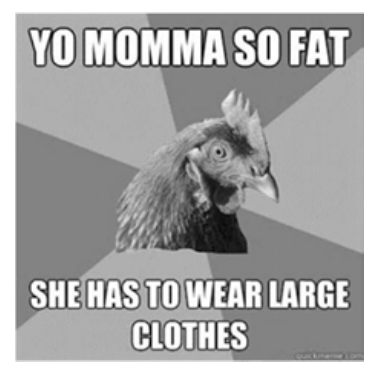
“As [anti-joke chicken] reveals, some of these image macros only truly make sense –- or at least receive an additional layer of interpretation –-when the recipient is aware of the name of the meme – or perhaps more accurately, the overall meaning of the meme that is captured by the name. ‘Sudden Clarity Clarence’, for instance, expresses the fact that any instance of the meme in question needs to be read in terms of an unexpected (though not necessarily deep or crucial) insight. In the theoretical framework of Construction Grammar, this links up with the non-compositionality of constructions: their conventional meaning is more than the simple sum of their parts.”
Zinner and Geeraerts, p 177
Aneeq Ejaz asks if memes are new form of literature, seeing them as a means of “transcultural expression [in a] hyperconnected world.” Maybe, but Ejaz’ critical interrogation of memes that “project emotions onto animals, like the famous Grumpy Cat,” feels a bit forced.
I wonder what code-shifting strategies Hipster Kitty is using to regain her lost feline/feminine agency?
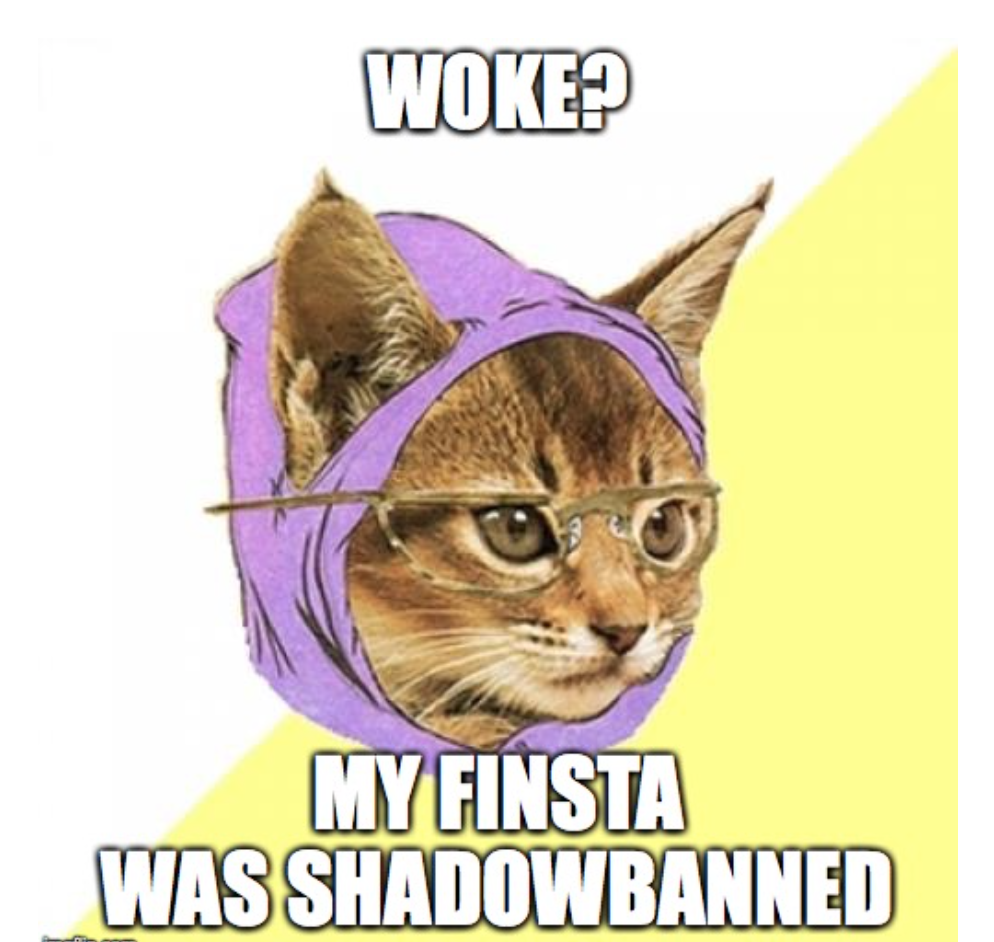
Even amateurs want in on the action on sites like Know Your Meme. Know Your Meme is a crowd-sourced collaboration “that researches and documents Internet memes and viral phenomena.” Sounds a little too X-files to me.
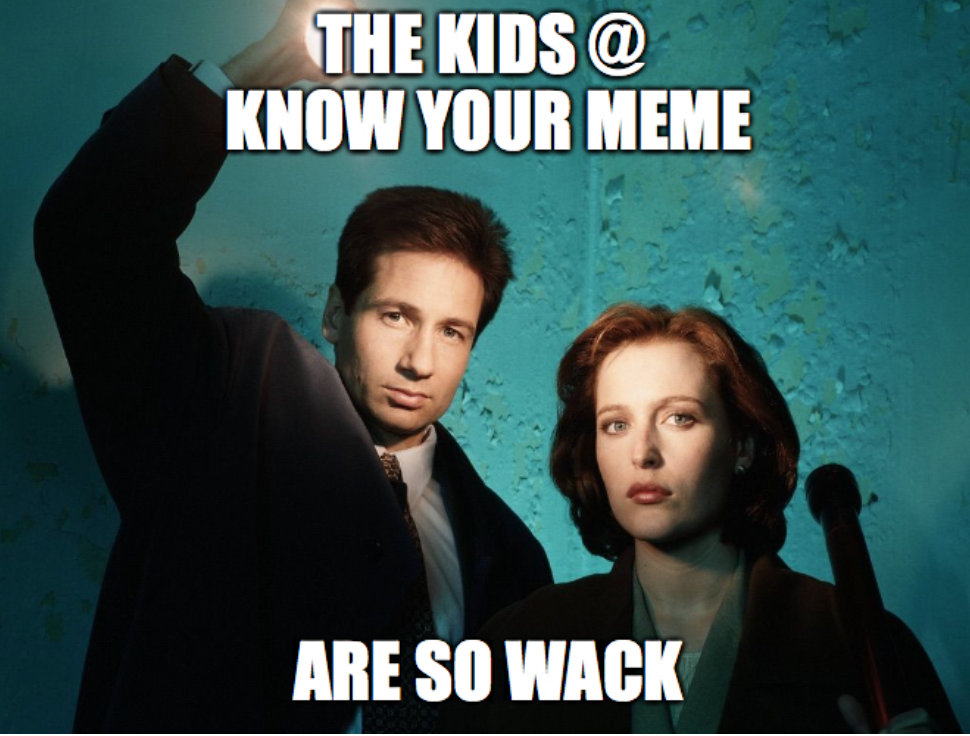
Silly, Clever, Unpredictable
To me, the joy of memes is that they bubble up from the vox populi. Who cares if they make little sense? Or if they don’t have any lasting value? Or if they can be at times ignorant, crude or patently false? Memes are made by we the people, who often make little sense.
Internet memes are glorious because they are free expression and because (like Kilroy) they rise spontaneously from the crowd, unlike the dogma produced by thought leaders and gatekeepers.
The best way to “get” memes is to make memes. I’d love to see you use the meme generators above to make and post an original meme on the comment section of Smith’s LinkedIn page .
Next in this series, we’ll look at Emoji.
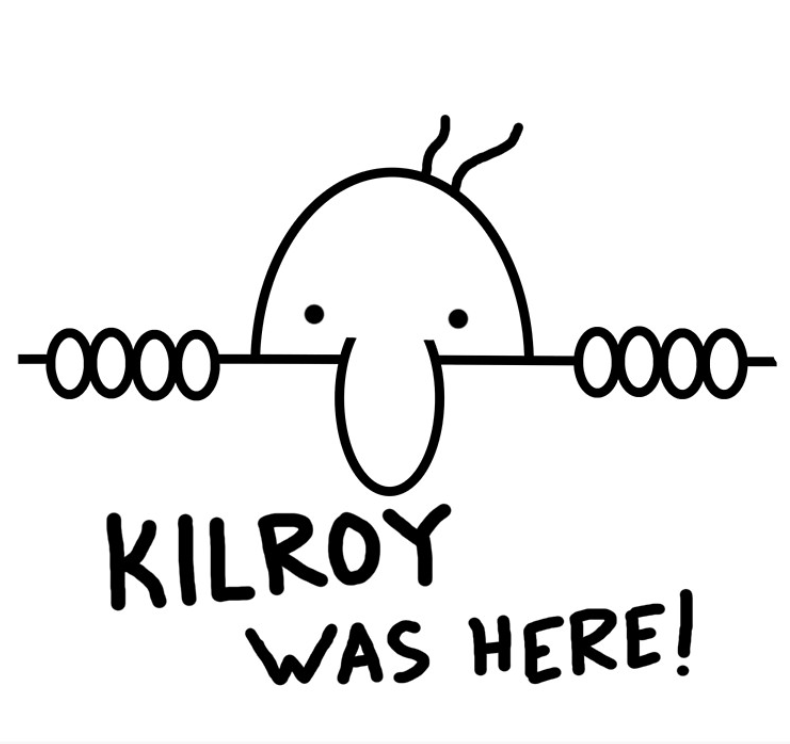
Sources:
Ejaz, A. “Are Internet Memes a New Form of Literature?” Quillette. November 28, 2016: https://quillette.com/2016/11/28/are-internet-memes-a-new-form-of-literature/
Gries, L. (2015). Still life with rhetoric: A new materialist approach for visual rhetoric. Logan: Utah State University Press.
McCulloch, G. (2019). Because Internet; Understanding the New Rules of Language. New York: Riverhead Books
Shifman, L. (2013). Memes in Digital Culture. Boston, MA: MIT Press.
Shifman L (2014). The cultural logic of photo-based genres. Journal of Visual Culture 13(3): 340–358.
Zinner E. and D.Geeraerts (2018). One does not simply process memes: Image macros as multimodal constructions. De Gruyter 167-193.
